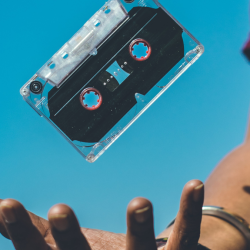What does Burger King sound like?
When the brand unveiled their new sonic branding earlier this year with something like that, I must confess the question had never really occurred to me. We are all of course familiar with the most famous examples of sonic branding like Intel’s five note ‘bong’ and I believe in the power of music to associate brands with emotion and jingles to lodge them in the memory. Burger King has undertaken a significant rebrand, in light of challenging trading results, with a distinctly nostalgic approach; increasingly common post the flattened logos and brands of the ‘digital’ era. It has a lot of distinctive brand assets to work with like the Whopper and the Crown, but, according to the sound design agency, ‘one ingredient was missing: a distinct and ownable musical expression that could capture their “Have It Your Way™” promise for global audiences.’
According to the case study it is the musical expression of the ‘have it your way’ promise and has been tested globally for its ability to boost emotional appeal. This got me thinking more broadly, as is too often the case. The industry has embraced the idea of distinctive brand assets, following Jenni Romaniuk’s book in 2018. Ask anyone to name some and the obvious things like logos, colours, mascots and so on will inevitably come to mind easily. If pushed, we can recall famous sonic branding examples and jingles from decades ago, but not for the majority of brands today.
So, how do these brands and their advertising work for people who can’t see?
This hadn’t occurred to me either — the essence of ableist privilege no doubt — but it seems worth considering, both for the sake of inclusion and of course the bottom line. Recent research from the Royal National Institute of Blind People (RNIB) predicts there will be a 27% increase in the number of people living with sight loss in the UK by 2035. One person starts to lose their sight every six minutes. According to the report this means that ‘one in five people in the UK will experience sight loss in their lifetime’, which seems like a significant customer base to ignore. Despite legislation that aims to protect their rights ‘blind and partially sighted people experience a significant information and inclusion gap because of their vision impairment.’
Obviously radio and now podcasts offer level media environments for the vision impaired, but these are frequently the least considered creatively by traditional agencies
The fact that there are numerous audio only agencies is testament to the inevitability of a traditional creative presentation centering on imagery. Advertising works by building memories to create familiarity, which creates fluency, which leads to slight favourability, especially in less considered supermarket purchases. This is why FMCG brands tend to spend a larger percentage of their revenue on marketing than the average company. Consider how confusing a supermarket is, with its innumerable choices and signage and promotions, all trying to control the architecture of your decisions to their benefit. For the vision impaired this is much harder. They may be blind and thus have no awareness of logos or packaging cues. They may be partially sighted, making navigating the aisles difficult:
‘If there was more things in shops to help people with sight loss to get round the store, maybe the writing on packaging could be better and directions in the store to be made bigger to help us get around easier.’ (RNIB research participant)
When Alexa appeared, prognosticator Scott Galloway announced, once again, that this heralded the ‘death of brands’: ‘Brands are shorthand for a set of associations that consumers use for guidance toward the right product. CPG brands have spent billions and decades building brand via messaging, packaging, placement (eye level), price, creative, endcaps, etc… all these weapons of brand … all of them go away with voice. No packaging, no logos, no price even.’ [2017]
As usual, brands didn’t die. As usual, this type of future-casting elided any consideration of those consumers for whom there has never been a logo for most brands. So, instead of business as usual, in order to include the possible one fifth of people in the UK who may suffer vision impairment, perhaps we all need to be thinking about what the brands we work on sound like.
Featured image: litoon dev / Unsplash


































